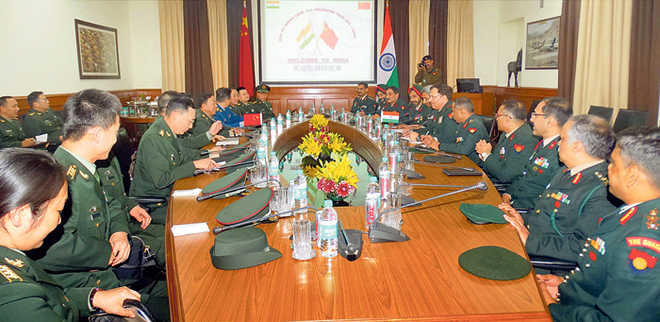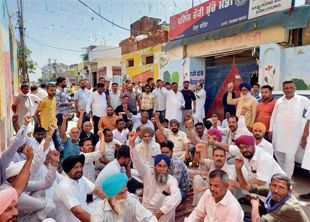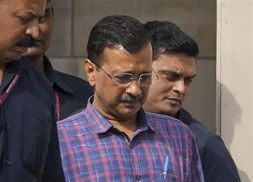
In February this year, a delegation led by Maj Gen Zhao Jin Song, the Vice Chief of Staff of PLA’s Headquarter Western Theatre Command, Chengdu, China, called on senior Indian Army officers, in New Delhi. — Agencies/File
Zarrar Khuhro
IN a subcontinent dominated by Pak-India conflicts, the short, sharp Sino-Indian war of 1962 remains rather neglected, with little analysis of how it helped shaped the region into what it is today. The recent standoff at the Doklam plateau, and the inevitable parallels that are being drawn, makes it worthwhile to take another look at this conflict.
The road to the 1962 war starts in Tibet — in fact, it starts because of the road to Tibet. No sooner had Mao proclaimed the People’s Republic of China (PRC) in 1949 that troops were sent to conquer this land, via a road that passed from the western Chinese province of Xinjiang through Aksai Chin and on to Tibet.
When a Tibetan uprising took place in 1959, this was again the route Chinese reinforcements took. The revolt failed and the Dalai Lama fled to India where he was granted asylum, much to China's chagrin. Soon after, India starts to strengthen its position along the McMahon line, the border between Indian and China. In particular it expanded its positions in Ladakh, which borders Aksai Chin.
The Indo-China war's role in regional politics is often ignored. To the Chinese, this potentially threatened a crucial supply route to Tibet, and thus their hold over it. Then there was the fact that India was a Soviet ally, and though China and the USSR shared the communist ideology, a Cold War waged between the two nations. Pressed on its long border with the USSR, China saw India was a potential threat that needed to be whittled down at some point, and that point came in 1962.
The Chinese struck in force, one army moving into Ladakh and another striking across the McMahon line from Tibet at four points. Unprepared and underequipped, with primary units deployed against Pakistan, the Indian forces were hopelessly outmanned and outmatched. The shock was such that a larger invasion was feared, but Beijing then announced a unilateral ceasefire, withdrawing to maintain a strategically favourable position along the sprawling border.
Up until then, Pak-China relations had been cordial but wary, and no warmer than Sino-Indian relations in the days of “Hindi-Chini Bhai Bhai.” After all, Pakistan was a card-carrying capitalist US ally, and China had fought a bloody war against the US in Korea in the 1950s.
Moreover, China also had territorial claims on parts of Azad Kashmir, and Tibet and Korea had demonstrated China's willingness to take decisive action to secure its interests.
The build-up to 1962 changed this, and while Pakistan did not engage in hostile action against India, it did pile pressure by announcing the holding of border negotiations with China. When the war ended with India being militarily and diplomatically humiliated, Pakistan was quick to conclude a border treaty with China in 1963. Justifying the deal, then foreign minister Zulfikar Ali Bhutto said Pakistan “would not like to see the tantrums and crisis (that marked the dispute) between the PRC and India”.
The lessons learned by Pakistan were that (a) disputes with China were to be avoided, (b) this state was a potential hedge/ ally against India and (c) that the Indian army was not as strong as it had seemed during its capture of Goa. This latter conclusion was crucial, as the idea of the Indian army being susceptible to strategic surprise played a significant role in the calculations that led to the '65 war.
The war also seems to have led to a feeling that China might overtly aid Pakistan in a future conflict with India. While this proved untrue, it was something that New Delhi also feared, and there was much speculation in India at the time that the Sino-Pak border agreement had secret military clauses too.
For India, while this war resulted in military humiliation and a serious loss of prestige, it served to unify the nation, feeding nationalist sentiment and spurring the process of militarisation. That, in turn, had the effect of slowing Indian economic growth somewhat as funds were diverted to the military.
On the international front, Anglo-American military aid given to India after the war brought India closer to the West, while simultaneously souring Pakistani attitudes towards its Western allies. Ayub Khan bluntly told both Washington and London that they must abandon the aid-India programme to keep Pakistan's friendship.
Consequently, when the US State Department protested at the signing of economic and trade agreements with China, the complaints were shrugged off. When Zhou-En-lai was invited to visit Pakistan in 1964, the US protested again to no avail. Pakistani officials and newspapers adopted a clear pro-Beijing line, questioning the value of a Western alliance that couldn't resolve the Kashmir dispute.
Trends and attitudes were established in this period that have marked the dynamics of the subcontinent ever since, and the alliances and enmities of today can be said to find their genesis in 1962.
By arrangement with the Dawn



























